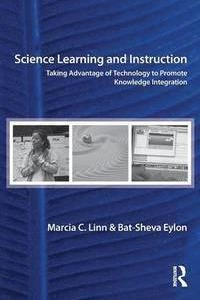
Liknande böcker
Learning to Think Spatially
Bok av National Research Council och Division on Earth and Life Studies m.fl.
Learning to Think Spatially examines how spatial thinking might be incorporated into existing standards-based instruction across the school curriculum. Spatial thinking must be recognized as a fundamental part of KaEURO"12 education and as an integrator and a facilitator for problem solving across the curriculum. With advances in computing technologies and the increasing availability of geospatial data, spatial thinking will play a significant role in the information-based economy of the twenty-first century. Using appropriately designed support systems tailored to the KaEURO"12 context, spatial thinking can be taught formally to all students. A geographic information system (GIS) offers one example of a high-technology support system that can enable students and teachers to practice and apply spatial thinking in many areas of the curriculum.







